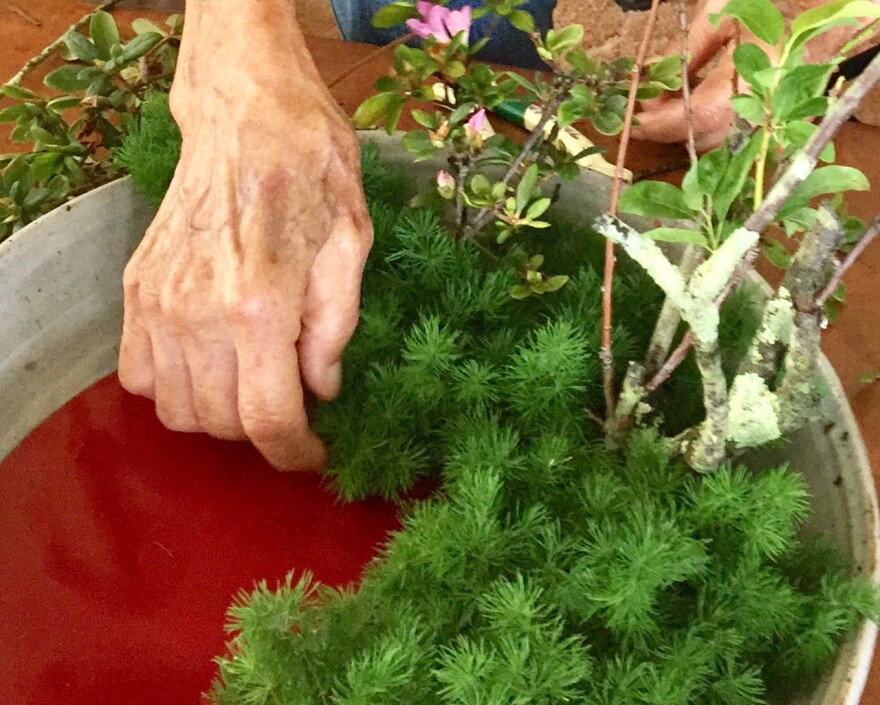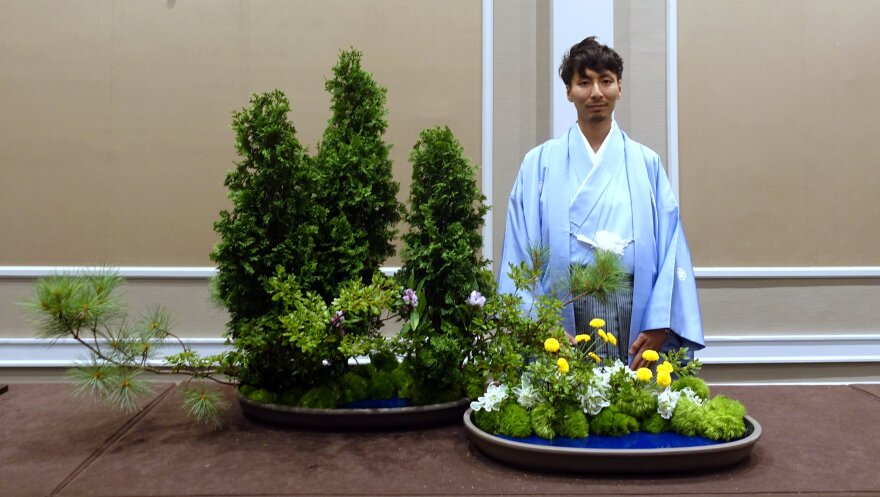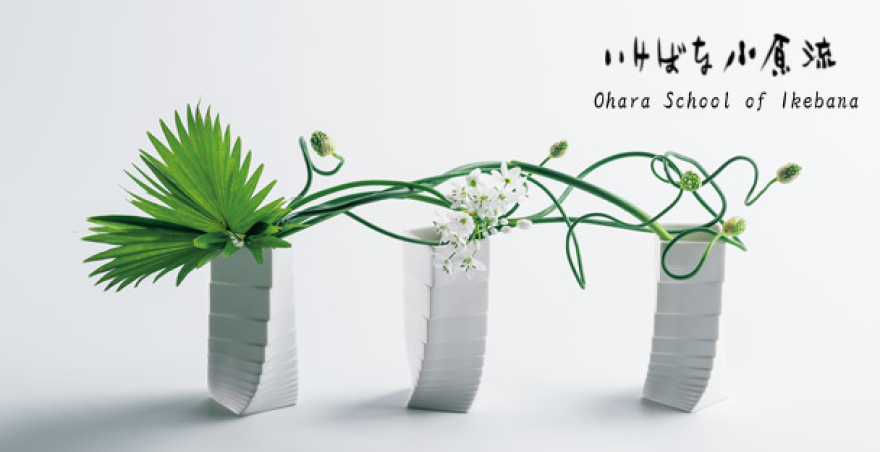Japanese floral design is called ikebana, and is rooted in Buddhist and Shinto traditions. Ikebana came into its own with the development of the tea ceremony, and Japan’s most famous leaders have been accomplished practitioners of the art. This week the Ohara School of Ikebana, Honolulu Chapter is celebrating its 60th anniversary, and Sensei Edith Tanaka agreed to give HPR listeners a peek into the art form. Noe Tanigawa reports.

You know you must be with an ikebana teacher when you’re in the largest most celebrated emporium of plants and flowers in Honolulu and she can’t find the right branch. We had to go back to her yard in Manoa, where Ikebana sensei Edith Tanaka and I are standing in front of a somewhat scraggly bush/tree, with arcing branches that end in twigs, that end in tufts of leaves.
Tanaka: Some people they pick any branch, and they think, oh, this is strong, we can use it like this. But when you really study the branch, it wasn’t growing like this, when you look at this part---

I asked, How did you pick this particular branch?
Tanaka: It was just one of the branches that was growing.
But she didn’t pick any of the others. Okay.
Tanaka: This is a K?ke‘e Plum from Kaua‘i—they have this growing wild. As you can see the branches are hard and the branches have tufts of leaves. If you look at this gardenia, it doesn’t have what Japanese call shimari, bringing it together. It’s all over the place. Understand? This as compared to this. Different. .
I asked if she would ever just cut the extra leaves off to make an end tuft—she said, not really.
“You work with nature, which I think is already a calming experience that brings peace to your life.”
Bette Uyeda has been studying ikebana for over 50 years.
Uyeda: Most of the people that take ikebana say, I take ikebana because it relaxes me, it brings me peace,

and tranquility, and you always have something to look at that’s beautiful that you created, and that gives you pleasure! And don’t we all need that?
Tanaka Sensei says the Ohara style of ikebana they practice originated the use of shallow vases in order to more closely resemble landscapes. A kenzan, or frog, like a mini bed of nails, sits in the low pool and plant life can be stuck in and held at precise angles.
Tanaka sensei has just snipped her long branch in two. I asked, what are you thinking?
Tanaka: Nothing. I’m just looking at the branches and feeling how the branches would like to go. Listen to them instead of myself telling them what to do.
Why did you cut off that tall part?
Tanaka: Because I’m making it smaller. This is the main branch, I guess I’ll just leave it this way…
Tanaka sensei has taken the rather homely K?ke‘e plum branch, pounded its end and stuck it into the frog. Next to it she stuck in the little branch she’d cut off.
So you’ve got some bug holes and some brownness on the leaves, that doesn’t bother you?

Tanaka: Well, some, but this isn’t that bad, so I’ll just leave it
This week, ikebana aficionados will watch Ohara School Headmaster Hiroki Ohara arrange. In hushed silence, the clips are exciting.
There are rules, like you need 3 elements, subject, secondary and object, but how exactly to make magic?
Tanaka: What you put in the arrangement is important. Not any old thing. You have three points, you don’t put, maybe a rose over here, unless it’s maybe a small one. But even then you wouldn’t. It wouldn’t be growing like that. Plum and azalea—that’s two very common plants that grow in Japan
Believe me, even if you know nothing about flowers or art, if you thought about it, you would never put that rose there either. It just would look wrong.

Can some arrangements be better than others?
Tanaka: Good or bad is determined individually, it depends on what you’re trying to aim for. When you do ikebana, if you’re trying to do well, so that everybody will think highly of you, then I think you’re defeating the purpose. You should do it because you love it and you want to transform whatever you’re doing.
Tanaka: When I was little, I loved flowers, any kind of weed flowers, I would pick and take it home.
Tanaka sensei, became a school principal, then went back to college to study teaching ikebana philosophy.

Tanaka: If you’re taking ikebana, you have to know, why are you doing this. And it goes beyond logic.
You’re trying to lose yourself. You’re concentrating so deeply in what you are doing, that you’re no longer yourself, but you become one with the flower.
The fiercest samurai Generals did this before heading out to battle.
Imagine that.
For more on Ohara School of Ikebana, Honolulu Chapter, information@ikebana-hawaii.org




